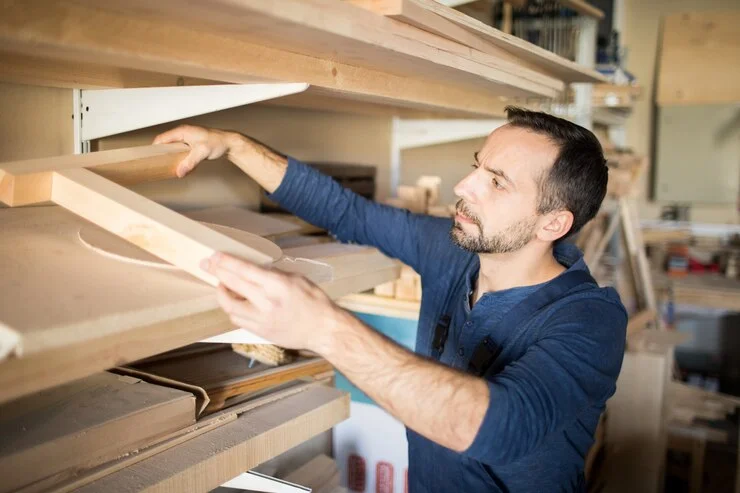
DIY Wooden Contraption Shelving with Levers to Open: A Functional and Creative Masterpiece
When it comes to home décor, shelving is often the unsung hero of organization and aesthetics. But what if your shelving could do more than just hold books, knick-knacks, or household items? Enter the world of DIY wooden contraption shelving with levers to open—a blend of practicality, creativity, and engineering that turns a simple storage unit into a functional work of art.
This type of shelving isn’t just about utility; it’s about creating something interactive and intriguing. Whether you’re a seasoned woodworker or a DIY enthusiast, crafting a lever-operated shelving unit is a rewarding project that will make your space stand out. In this article, we’ll explore what goes into designing, building, and customizing your own lever-operated shelving system.
The Appeal of Lever-Operated Shelving
At its core, lever-operated shelving combines form and function. Unlike traditional shelves that remain static, this design incorporates movable parts, allowing you to open, close, or adjust sections of the shelving with the pull of a lever.
Here’s why this concept is so appealing:
- Interactive Design: The mechanism adds an element of curiosity and engagement, making the shelving unit a conversation starter.
- Space Efficiency: Hidden compartments or collapsible sections can maximize space in small rooms or apartments.
- Aesthetic Value: The intricate design of levers, pulleys, and gears adds a steampunk or rustic charm to your interior décor.
- Customization: This project can be tailored to fit your needs, from the size and materials to the complexity of the mechanism.
Planning Your DIY Project
Before diving into the construction, proper planning is essential to ensure your shelving unit is both functional and visually appealing.
1. Choose a Design Concept
Decide on the purpose and aesthetic of your shelving. Some popular ideas include:
- Hidden Compartments: Sections of the shelf that swing open or slide away, perfect for storing valuables.
- Adjustable Shelves: Levers that allow you to raise or lower shelves to fit different-sized items.
- Movable Panels: Decorative panels that reveal shelving behind them when operated by a lever.
2. Sketch Your Design
Create a detailed sketch or blueprint. Include dimensions, the placement of levers, and the mechanism’s layout. If you’re new to woodworking or engineering, start with a simple design before attempting more intricate mechanisms.
3. Gather Materials
You’ll need a combination of woodworking tools and materials to bring your project to life. Typical materials include:
- Wood: Plywood, pine, or reclaimed wood for the shelving and frame.
- Levers and Hinges: Metal or wooden levers, hinges, and brackets to enable movement.
- Pulleys and Gears: For more complex designs, these can add functionality and flair.
- Fasteners: Screws, nails, and wood glue for assembly.
- Finishes: Sandpaper, stains, or paint to give your shelving the desired look.
Building the Wooden Contraption Shelving
Step 1: Construct the Frame
The frame serves as the foundation for your shelving unit.
- Cut your wood to the required dimensions.
- Assemble the outer frame using screws and wood glue. Ensure it’s sturdy enough to support the weight of the shelves and the mechanism.
- Sand the frame to remove rough edges and splinters.
Step 2: Build the Shelves
- Cut wooden boards for the shelves, ensuring they fit snugly within the frame.
- Attach the shelves to the frame using brackets, but leave room for any sections that will be movable.
Step 3: Install the Lever Mechanism
- Simple Lever System: For a basic design, attach a lever to a pivot point and connect it to the movable section of the shelf using a rod or string. Pulling the lever should cause the section to open or close.
- Advanced Mechanism: Incorporate gears, pulleys, or counterweights for smoother operation or more complex movements. These can be purchased from hardware stores or made from wood or metal.
Step 4: Test the Mechanism
Before finishing the project, test the lever system to ensure it operates smoothly. Make adjustments as needed, such as tightening screws or realigning components.
Step 5: Add Finishing Touches
- Sand the entire unit again to ensure a smooth surface.
- Apply a stain, paint, or varnish to protect the wood and enhance its appearance.
- Attach decorative elements, such as vintage-style levers, ornate brackets, or carved details, to personalize your shelving.
Customization Ideas
To make your wooden contraption shelving truly unique, consider these creative additions:
- Lighting: Add LED strips or small lights to highlight hidden compartments or showcase items.
- Engraving: Use a wood-burning tool to add patterns, designs, or quotes.
- Mixed Materials: Incorporate metal or glass elements for a modern industrial look.
- Locking Mechanisms: Add a latch or lock to hidden compartments for added security.
Challenges and Tips
While building a lever-operated shelving unit is an exciting project, it can come with challenges. Here are some tips to help you succeed:
- Start Simple: If you’re new to woodworking or mechanical systems, stick to a basic lever design before attempting complex mechanisms.
- Measure Twice, Cut Once: Precision is key when aligning shelves and levers. Double-check your measurements before cutting or drilling.
- Use Quality Materials: Sturdy wood and reliable hardware will ensure your shelving unit is durable and long-lasting.
- Seek Inspiration: Look online for tutorials, videos, or examples of similar projects to spark ideas and learn techniques.
Conclusion
DIY wooden contraption shelving with levers to open is a fantastic way to combine craftsmanship, creativity, and functionality. Not only will you have a practical storage solution, but you’ll also create a conversation-worthy piece that showcases your skills and ingenuity.
Whether you’re designing a hidden compartment shelf for your home office, a steampunk-inspired bookcase for your living room, or a playful storage solution for your kids’ room, this project offers endless possibilities. By taking the time to plan, build, and customize your shelving unit, you’ll end up with a unique masterpiece that reflects your style and creativity.
